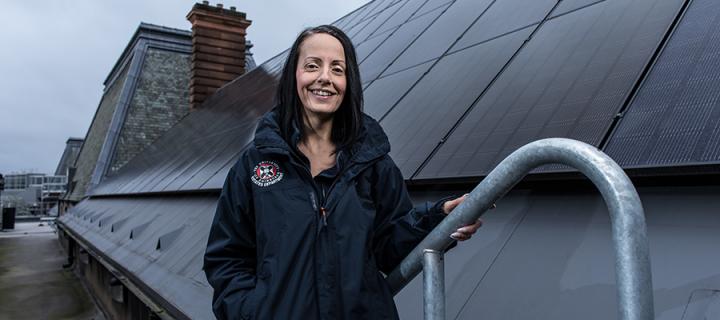Energy efficiency
Since 2016/17 the University has invested £8 million in 115 energy efficiency and renewable energy projects.
Project funding and investment

The energy projects have been enabled through our £4.75 million Sustainable Campus Fund (SCF) and funding support from the Scottish Funding Council. To date, these projects are enabling £1 million in utility savings and estimated annual GHG savings of 3,275 tonnes CO2e.
Our energy efficiency investment programme has been reviewed and revised within our Energy Masterplan to 2040. This includes £140 million in potential energy efficiency projects, of which £30 million are prioritized with estimated savings of £3.8 million and 11,000 tonnes CO2e.
Energy Masterplan
Through 2020/21 the University has continued to evolve the Energy Masterplan to 2040. The Energy Masterplan provides a long term strategy for maintaining affordable, sustainable, and resilient energy infrastructure at the University of Edinburgh whilst meeting our carbon goals, ensuring infrastructure aligns with future policy and regulation.
We have developed a high level techno-economic appraisal of likely long term energy infrastructure investment pathways at each of our main campuses. The Energy Masterplan is structured around a hierarchy of interventions aimed at maximising long term value and financial benefit where possible. The investment hierarchy prioritises
(a) the elimination of energy waste
(b) minimization of energy demand
(c) optimizing energy efficiency, and
(d) transitioning to low carbon energy sources.
Energy efficiency modelling
We are modelling three levels of energy efficiency investment across our estate to assess the potential carbon and financial impacts.
‘Light efficiency’ retrofits demonstrate a financial payback under ten years and include heating and ventilation control, lighting upgrades, improved insulation, pump and fan motor upgrades and a significant scope of interventions aimed at making our energy intensive laboratories more efficient.
‘Deep efficiency’ retrofits include a wider scope of building interventions required to transition to ‘next generation’ heat networks and achieve minimal heat losses.
'Focused' interventions represent the likely refurbishment strategy aligned to the wider Capital Planning programme. These include investments in fabric and glazing and major upgrades to heating distribution systems.
Low carbon heat strategies
Four main ‘low carbon heat’ strategies have been assessed using a detailed energy modelling process which evaluates the energy, cost and carbon impacts of investing in new heat supply technologies and building level energy efficiency retrofits.
The main technology pathways which have been evaluated in detail are electrically driven heat pumps on our existing heat networks and the purchase of heat from regional third party heat networks.
As our technical concept designs progress for each campus, complementary technologies (e.g. battery storage, decentralised thermal storage) will be assessed in detail. Concept designs will be developed that enable future flexibility and adaptability.
Metering
Utility metering installations have progressed in 2020/21 to enable improved building level electricity and heat demand monitoring. In total, 500 new electrical, heat and cooling meters, plus additional water and gas meters have been installed.

